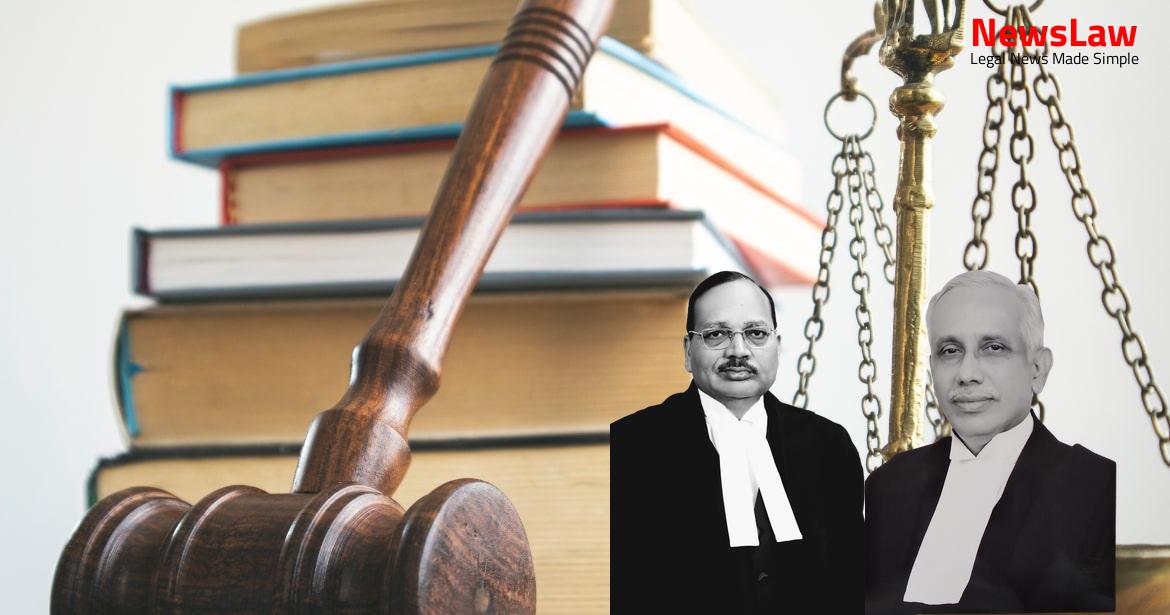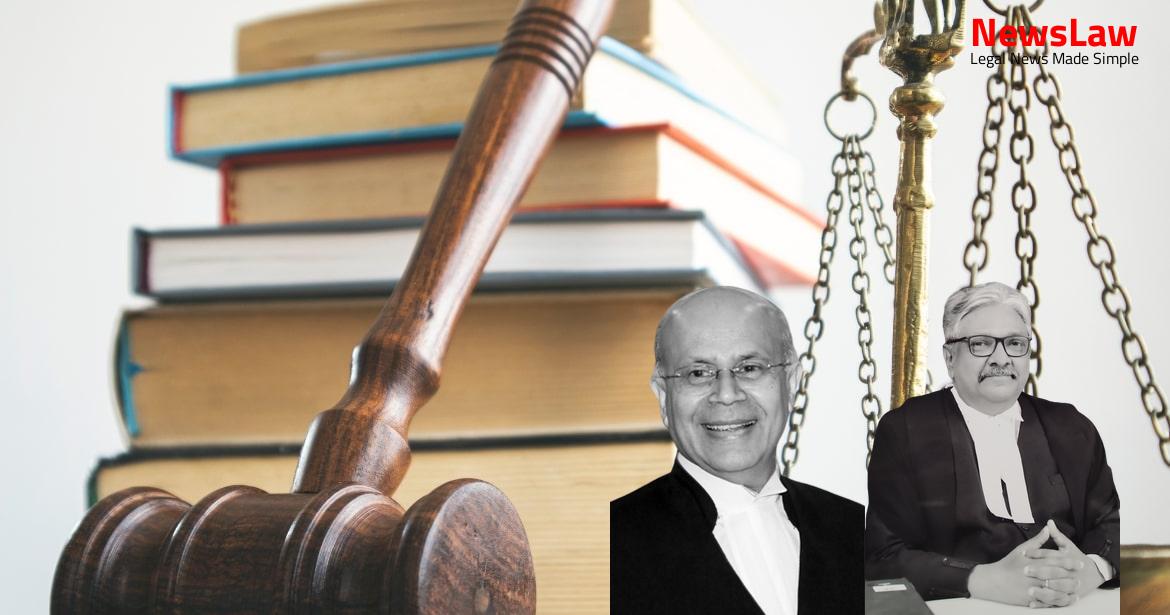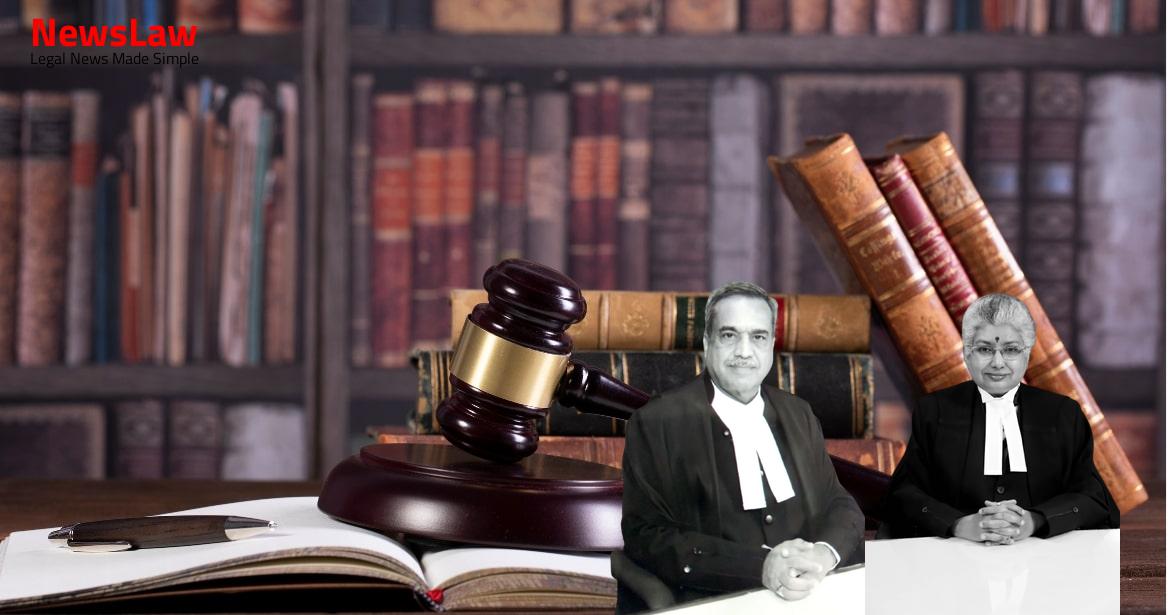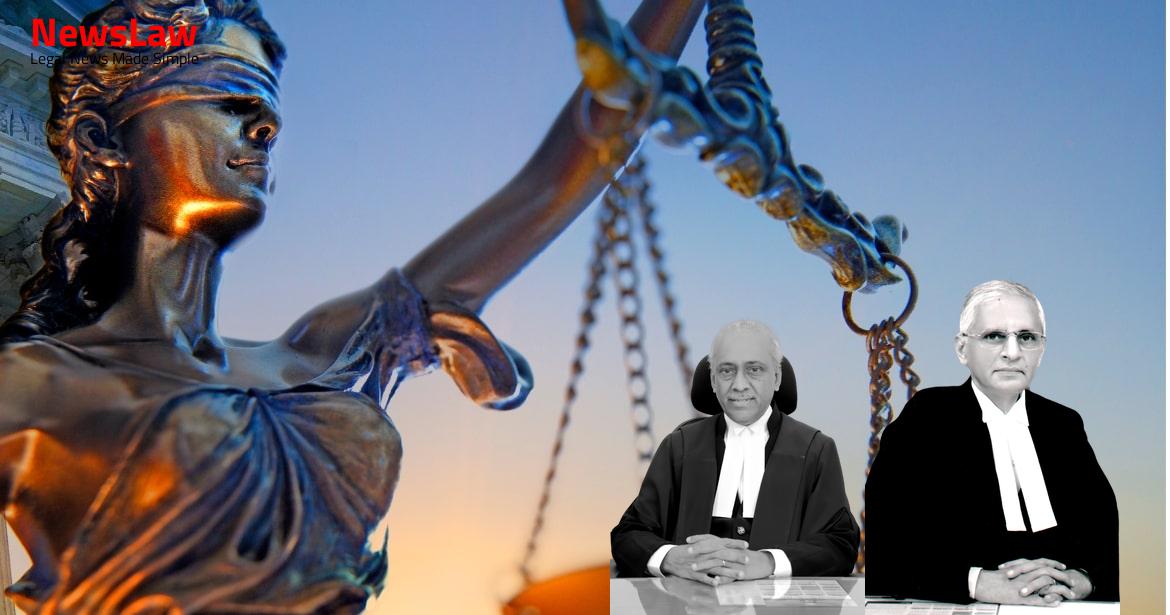In a recent Criminal Appeal case, the court provided a critical legal analysis that sheds light on the importance of thorough examination of evidence and proper application of legal principles in criminal proceedings. Let’s explore the nuances of the court’s analysis and its potential impact on future legal cases.
Facts
- Parminder Kaur has filed a Criminal Appeal against the High Court’s decision upholding her conviction under Sections 366A and 506 of the Indian Penal Code.
- The Additional Sessions Judge had convicted Parminder Kaur and imposed a sentence of three years rigorous imprisonment and a fine of Rs. 2000.
- The prosecution’s case revolved around Parminder Kaur allegedly attempting to entice the prosecutrix into illicit intercourse in exchange for favors from a rich tenant boy.
- The defense put forth by Parminder Kaur included denial of the allegations and presenting a neighbor as a witness, along with claiming a revenge motive from a previous rape allegation against another individual.
- The incident involved Parminder Kaur pushing the prosecutrix into a room occupied by the tenant boy and locking the door from outside, leading to the prosecutrix’s distress and subsequent complaint to the police.
- The prosecution presented five witnesses, including the prosecutrix and her father, while Parminder Kaur examined one witness and offered a different version of events during her statement under Section 313 of the CrPC.
- Parminder Kaur’s threats to the prosecutrix and her family members added to the gravity of the situation as per the prosecution’s case.
- High Court dismissed the appeal citing accused’s statement under Section 313 CrPC as an afterthought.
- High Court condoned the delay in FIR registration due to fear of reputation and mild severity of the case.
- Trial Court held the appellant guilty of inducing illicit intercourse and criminally intimidating the prosecutrix.
- Omissions like non-examination of certain witnesses were deemed insignificant.
- Minority of the prosecutrix was proven, testimonies of PW1 and PW2 were deemed impeccable.
- High Court upheld the conviction and sentencing of the appellant.
- Appellant’s alternate version was rejected by the trial Court.
- Prosecutrix was confirmed to be a minor based on school records.
- Trial Court did not delve into specific elements of Section 366A or 506 IPC.
Also Read: Interference with Acquittal Orders: Legal Analysis
Arguments
- The testimonies of the two star-witnesses were criticized for being unreliable due to material contradictions.
- DW-1 mentioned during cross-examination that PW-2 was residing in a house owned by Bhola Singh, the person accused of rape by the appellant.
- The delay in filing the FIR and the failure to locate the male tenant raised doubts about the genuineness of the case, suggesting ulterior motives by the prosecutrix’s family.
- The appellant’s denial and alternate version presented under Section 313 CrPC were highlighted, emphasizing the lack of effective rebuttal by the prosecution or thorough examination of the statutory statement by the lower courts.
- Reliance was placed on PW-2’s cross-examination where he denied knowing Bhola Singh to counter the false implication allegation by the prosecutrix.
- The effect of these proceedings on Bhola Singh’s trial and subsequent acquittal on the grounds of Parminder Kaur’s questionable character and trafficking of minors was highlighted to show a colorable motive behind the case against the appellant.
- The learned state counsel supported the impugned judgment by emphasizing the concurrent findings of the Courts below.
Also Read: Analysis of Suppression of Information in Employment Selection: Legal Perspective
Analysis
- The trial Court and High Court have disregarded contradictions highlighted by the defense side
- Failure of the prosecution to lead the best evidence in its possession and the adverse inference that should follow
- Significance of the five-day delay in registering the FIR due to the father being an eyewitness
- The impermissible reversal of burden of proof imposed in criminal trials
- The importance of the alternate version presented by the appellant
- The lack of examination of material independent witnesses, adversely affecting the prosecution’s case
- The gross mis handling of the investigation and prosecution, with crucial aspects being ignored or dealt with hastily
- The sweeping generalizations and superficial analysis by the courts below
- The failure to refute the Section 313 CrPC statements and the generic reasoning employed
- The doubts and contradictions in the testimonies of key witnesses PW-1 and PW-2
- The lack of serious effort in bringing home the appellant’s guilt and the missing links in the story
- The importance of fair application of mind by the trial Court and consideration of the defense
- The problematic signal sent by sweeping assumptions concerning delays in filing FIRs for sexual offenses
- The failure to utilize medical examination or other avenues for redress by the prosecution
- The contradiction in the description of the male tenant by the prosecutrix and her father
- The failure to delve deep into the factual matrix of the case by the lower courts
- Prosecution failed to prove the guilt of the appellant under Section 366A and 506 of the IPC beyond reasonable doubt
- Trial Court did not conduct separate analysis or record findings on the charge of criminal intimidation
- Conviction for criminal intimidation is questionable as it is derivative of the main charge
- Common testimony of PW-1, doubted on both charges, should not be solely relied upon without corroboration
Also Read: Analysis of Cheating and Forgery in Passport Case
Decision
- The appeal has been allowed.
- The conviction and sentence awarded by the Courts below have been set aside.
- The appellant has been acquitted.
- The appellant is set free.
Case Title: PARMINDER KAUR @ P.P.KAUR @ SONI Vs. THE STATE OF PUNJAB (2020 INSC 467)
Case Number: Crl.A. No.-000283-000283 / 2011



